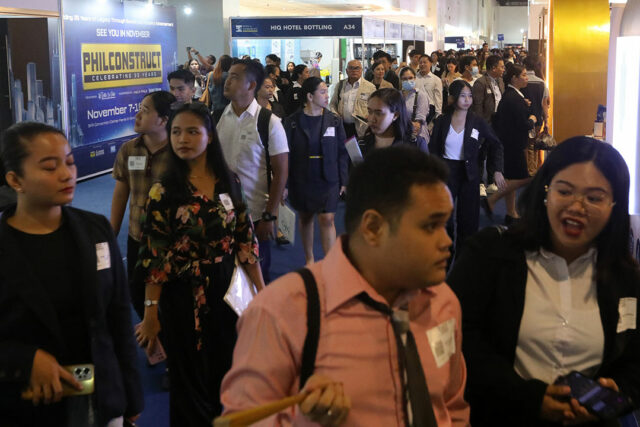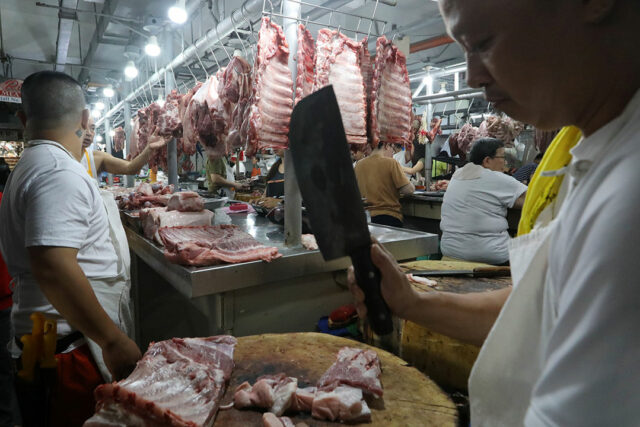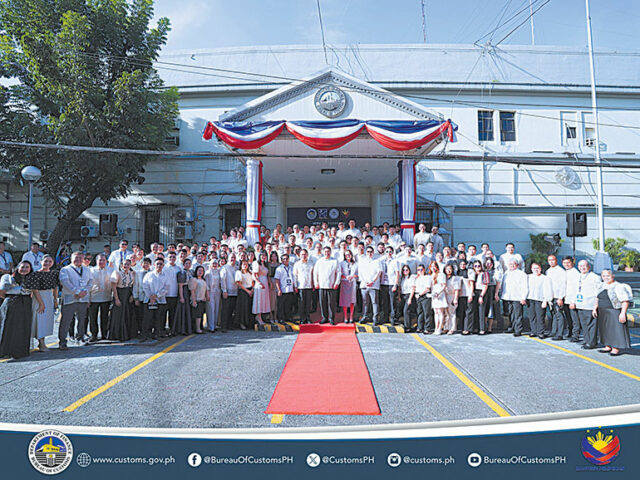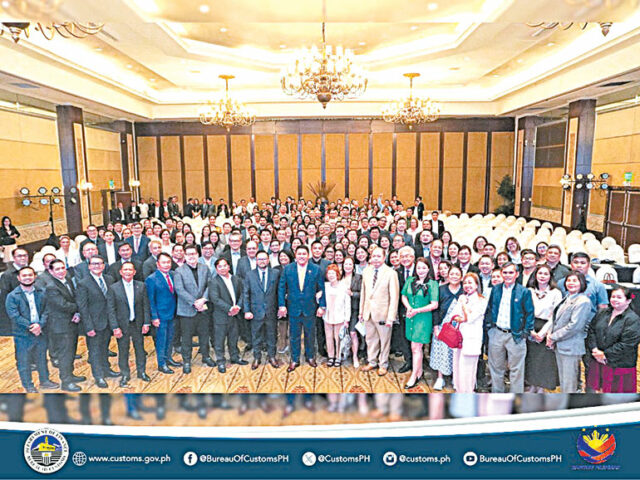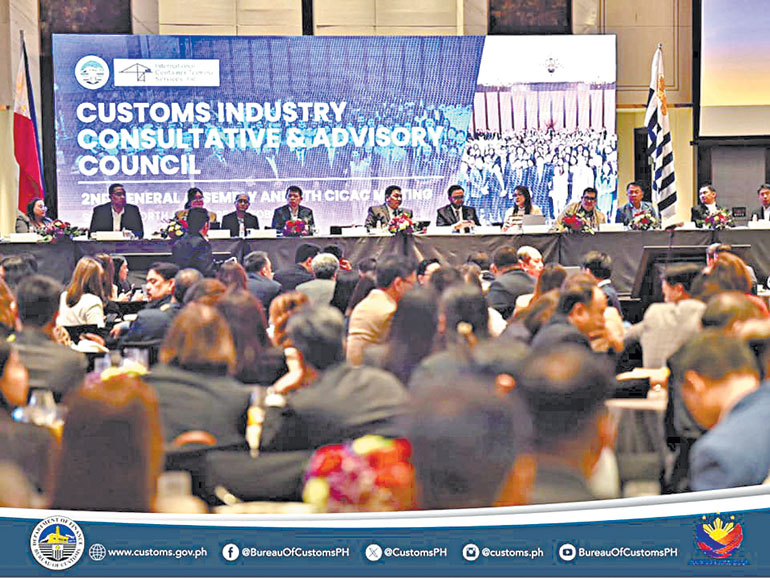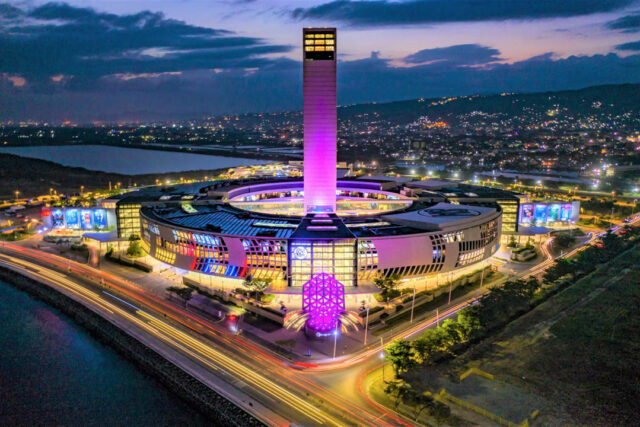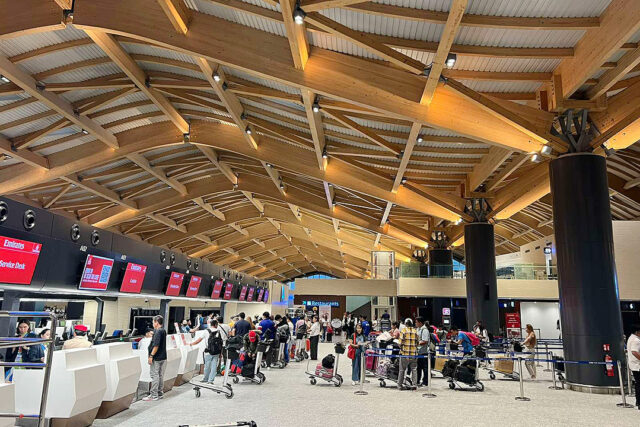By Chloe Mari A. Hufana, Reporter
PHILIPPINE UNEMPLOYMENT eased to 3.1% in December amid a surge in hiring in the transport and storage sector, bringing the full-year average to a record-low of 3.8%, according to the statistics agency.
Preliminary data from the Philippine Statistics Authority’s (PSA) Labor Force Survey showed the jobless rate in December was unchanged from the same month in 2023, but slightly lower than 3.2% in November.
The number of unemployed Filipinos increased to 1.63 million in December, up from 1.6 million in the prior year but slightly lower than 1.66 million in November.
December also saw the lowest unemployment rate since April 2005, when the statistics agency revised its definition of unemployed to Filipinos aged 15 years and older without a job, available for work and actively seeking one.
For 2024, National Statistician Claire Dennis S. Mapa said the jobless rate averaged 3.8% which is equivalent to 1.94 million jobless Filipinos. This was lower than the 4.4% jobless rate, representing 2.19 million jobless Filipinos, in 2023.
The full-year unemployment rate in 2024 was also the lowest since 2005.

The modest drop in unemployment in December 2024 was attributed to a surge in hiring for transport and storage workers during the holiday season, Mr. Mapa said, noting the sector recorded an additional 184,000 workers month on month.
Year on year, the sector gained 555,000 workers.
“Most of this is from passenger transport by road, and this is an effect of our holiday season,” Mr. Mapa said in mixed English and Filipino at a news briefing in Quezon City.
“We can observe growth in airport shuttle services, taxi operations, and passenger land transportation overall. This indicates positive movement in the sector. Additionally, we’ve seen an increase in the use of buses for public transport,” he added.
Meanwhile, job quality worsened year on year as the underemployment rate slipped to 10.9% (5.48 million), from 11.9% (6.01 million) in December 2023. Month on month, the underemployment rate went up from 10.8% (5.35 million) in November.
This was also the lowest underemployment rate since April 2005 when the PSA redefined underemployment as individuals who are employed but seek additional jobs or work hours.
For 2024, the average underemployment rate fell to 11.9% from 12.3% in 2023. This translated to 5.83 million underemployed Filipinos last year, lower than 5.94 million in 2023, Mr. Mapa said.
Labor Secretary Bienvenido E. Laguesma said the December 2024 Labor Force Survey showed the government’s efforts, with the support of the private sector, are paying off and gaining ground.
“We will continue to work in collaboration with the private sector towards job creation to ensure a more permanent source of income and decent living conditions for our workforce,” he told BusinessWorld in a Viber chat. “If there are more jobs, access to these opportunities will be open to and available for workers, even to those in the informal sector.”
National Economic and Development Authority Secretary Arsenio M. Balisacan said in a statement that strategies to strengthen the labor market are “crucial to sustaining our economic momentum and providing higher earning opportunities for Filipinos.”
“The government remains committed to advancing both supply- and demand-side measures that will foster a more dynamic labor environment and meet the targets set in the Philippine Development Plan 2023-2028,” he said.
Finance Secretary Ralph G. Recto said the government will continue to push for initiatives that create quality jobs for Filipinos.
“We are focusing heavily on improving education, infrastructure, and human development to ensure that we build a Filipino workforce equipped with the tools and opportunities they need to compete on the global stage,” Mr. Recto said in a statement, emphasizing workforce upskilling.
EMPLOYMENT RATE
Meanwhile, the PSA also reported that the employment rate slightly improved to 96.9%, equivalent to 50.19 million employed Filipinos in December from 96.8% in November when there were 49.54 million employed Filipinos.
The employment rate was unchanged from December 2023. However, there were slightly more employed Filipinos at 50.52 million in December 2023.
For 2024, the average employment rate rose to 96.2%, from the 95.6% logged in 2023. This is equivalent to 48.85 million employed Filipinos in 2024, higher than the 2023 average of 48.18 million.
Meanwhile, the labor force participation rate (LFPR) fell to 65.1% in December from 66.6% in December 2023. This represented a labor force of 51.81 million, lower than 52.13 million in December 2023.
University of the Philippines School of Labor and Industrial Relations Assistant Professor Benjamin B. Velasco said the modest decline in LFPR showed persistent challenges in job creation.
“Population will always be increasing, so that is a given. Population growth drives consumption and also production, so it is not a negative factor itself though large increases in population do present a challenge to policy making, including labor market governance,” he said in a Facebook Messenger chat.
“The problem of job creation is also bared in the significant decrease in youth LFPR.”
The youth LFPR declined to 31.9% in December from 34.5% in December 2023. The youth employment rate also dropped to 90.9% in December from 91.8% in the year prior.
SECTORAL GAINS AND LOSSES
PSA data also showed agriculture and forestry lost 1.56 million workers year on year in December.

Mr. Mapa attributed the losses to the series of typhoons that hit the country in the fourth quarter, noting that about 557,000 of them were paddy rice farmers.
Workers engaged in planting, transplanting and other related activities lost 424,000 workers year on year in December. Hog farming lost 236,000 jobs as African Swine Fever (ASF) continued to affect production.
Month on month, the agriculture and forestry sector saw the highest increase as an additional 735,000 workers were hired.
At the same time, the sector covering wholesale and retail trade, and repair of motor vehicles and motorcycles, recorded the greatest number of job losses at 391,000 month on month in December.
Mr. Mapa said 294,000 of those job losses came from the retail sales sector that includes stalls, markets, food and beverages, and tobacco products.
About 219,000 workers involved in accommodation and food service activities also lost their jobs in December 2024, despite the surge in holiday activities.

The services sector had the most number of employees, contributing 60.5% to the total workforce.
The agriculture and industry sectors followed, representing 21.3% and 18.3% of the total number of employed individuals, respectively.
WAGE AND SALARY WORKERS
Wage and salary laborers continued to account for the bulk or 63.1% of employed Filipinos in December 2024, followed by self-employed individuals without any paid employees (28.5%), unpaid family workers (6.8%) and employers in their own family-operated farm or business (1.6%).
Among wage and salary workers, those employed in private establishments accounted for 78.9%, while those employed in government or government-controlled corporations represented 14.4%.
Wage and salary workers are people who are paid for their work in private establishments, government, or their own family-run business, the PSA said on its website.
Federation of Free Workers President Jose Sonny G. Matula urged the government to raise wages to boost workers’ purchasing power and increase demand for local goods and services.
“Contrary to employers’ contention, wage hikes support our farmers, fisherfolk, and informal sector workers because workers buy their products due to increased purchasing power,” he said in a Viber chat.
While the record-low unemployment rate for December 2024 is a good thing, Mr. Matula said it is not surprising.
“Employment almost always goes up because of the increased purchasing power of workers who are consumers, too. Workers doubled or tripled their incomes due to 13th month and Christmas or year-end bonuses,” he said.
“But before we break out the confetti, let’s not forget: the quality of these jobs still leaves a lot to be desired. Jobs generated were temps.”
On Monday, the House of Representatives approved on second reading a bill granting a P200 hike for minimum wage earners. The Senate approved a counterpart bill for P100 in February last year.




